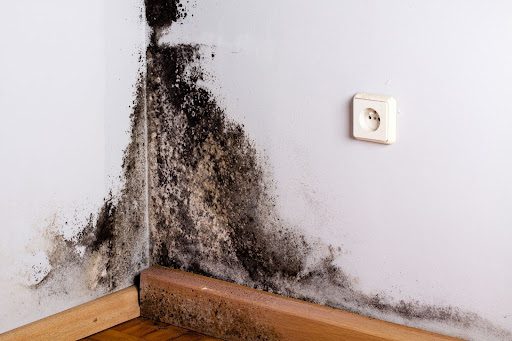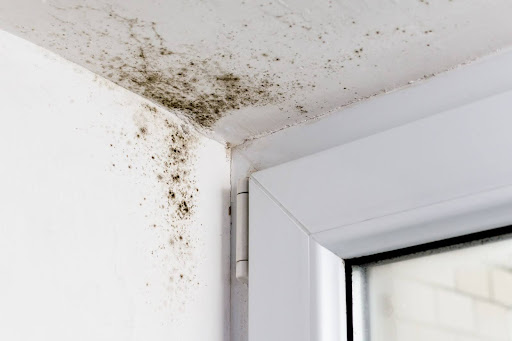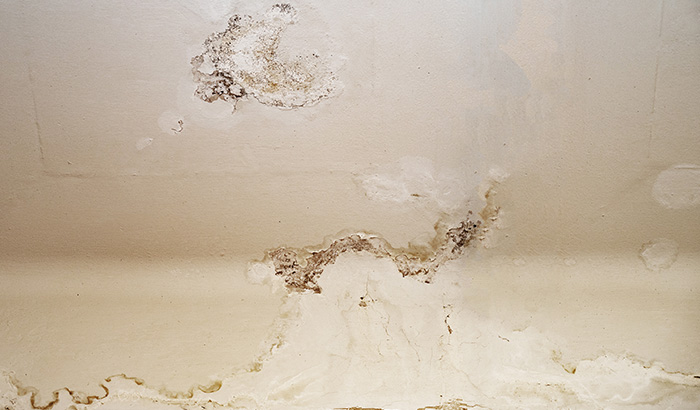Hidden mold poses a silent threat to your home and health, lurking unseen in damp, dark areas. Often undetected until it becomes a major problem, hidden mold can compromise the structural integrity of your home and pose serious health risks, especially to those with allergies or respiratory issues.
Early detection and prevention are crucial in combating this issue. In this blog, we’ll delve into the signs of hidden mold, effective detection strategies, and practical prevention measures.
This blog aims to equip you with the knowledge to identify potential mold problems early and take proactive steps to maintain a healthy, mold-free home. Understanding these aspects is essential to safeguarding your living space and well-being against the hidden dangers of mold.
Understanding Mold
Mold is a type of fungal growth that occurs in concealed areas of your home. Mold often grows where there is moisture and little ventilation. Environments like this are an ideal breeding ground for mold. Hidden mold grows behind walls, under floors, etc., making it more difficult to detect and address.
These locations often provide the perfect combination of moisture, warmth, and organic material that mold spores need to flourish. Basements, attics, and bathrooms are particularly susceptible due to their higher humidity levels and potential for leaks.
There are health risks associated with mold. Hidden mold is harder to find, so you may not notice it early on and be exposed longer. Prolonged mold exposure can lead to respiratory issues, allergic reactions, and even more serious health conditions. This is especially true for individuals with pre-existing health conditions or compromised immune systems.
Additionally, mold causes property damage. It may weaken structural elements of your home, like wooden beams and drywall.
Understanding the nature and risks of hidden mold is the first step in effectively managing and preventing it. Awareness of common hiding spots, signs of mold, and potential health implications is crucial for maintaining a safe and healthy living environment.

Signs of hidden mold in your home
Detecting hidden mold in your home can be challenging, but there are several telltale signs that alert you of its presence. When you know what to look for, it’s easier to identify and address where mold is growing.
1. Physical signs
One of the most visible signs of hidden mold is discoloration on walls, ceilings, or floors. These spots appear in various shades, including black, green, or yellow, often indicating mold growing beneath the surface.
Warping or buckling wooden elements in your home, such as floorboards or paneling, often signal hidden mold. This warping occurs when the wood absorbs moisture. Additionally, water stains or damp spots, particularly in areas not typically exposed to water, should raise immediate concerns about potential mold growth.
2. Health symptoms
Hidden mold can significantly impact your health, especially if you have allergies or respiratory conditions. Common symptoms include persistent coughing, sneezing, sore throats, itchy eyes, and nasal congestion. Those with asthma or other respiratory conditions may find their symptoms worsening.
If you or your family members experience a sudden onset or escalation of these symptoms without a clear cause, it could be a reaction to mold spores in your environment.
3. Smell
A musty, earthy odor is often associated with mold growth. This distinctive smell strongly indicates hidden mold, especially in areas with no visible signs of mold. If you notice a persistent musty odor in your home, investigate it further.
Recognizing these signs of hidden mold is essential for maintaining a healthy living environment. If you notice any of these indicators, take immediate action to identify and address the source of the mold. When you catch mold early, it’s easier to stop the spread and protect yourself and your home.
Mold Detection Strategies
Detecting mold, especially when it’s hidden, requires a strategic approach. Whether you opt for a professional inspection or decide to conduct a DIY inspection, understanding the process will help uncover and address any mold issues in your home.
1. Professional inspection
There are situations where a professional inspection is advisable and necessary. If you’ve noticed any signs of hidden mold but can’t locate the source, it’s time to call in the experts.
Professionals have the knowledge and tools to detect mold in places that might be missed in a DIY inspection. They also assess the extent of mold growth and provide recommendations for remediation. A professional inspection is especially appropriate when dealing with water damage or after a flood.
2. DIY inspection tips
If you suspect mold growth and want to conduct a preliminary inspection yourself, start by checking areas prone to moisture accumulation for visible signs of mold, water damage, or condensation.
Pay attention to musty odors, which can indicate the presence of mold even if it’s not visible. Inspect hidden areas like under sinks, behind appliances, and crawl spaces. Always wear gloves and a mask when investigating potential mold sites.
3. Tools and technology used in mold detection
Professionals use a variety of tools and technology for mold detection.
Moisture meters detect moisture in walls and floors. Moisture is a common precursor to mold growth.
Thermal imaging cameras identify temperature variations in walls and ceilings, which often indicate hidden moisture.
Air sampling tests the concentration of mold spores in the indoor environment, providing a clear picture of the air quality in your home.
Whether you choose a professional inspection or a DIY approach, the key is to be thorough and proactive. Early mold detection can save you from health risks and costly repairs in the long run.

Preventing Mold Growth in Your Home
Preventing mold growth in your home is about controlling moisture, ensuring proper ventilation, and maintaining regular cleaning routines.
1. Moisture control
The key to mold prevention is keeping your home dry. Address leaks promptly, wherever they are. In moisture-prone areas, thoroughly dry off surfaces after use, and use dehumidifiers if needed. Also, avoid leaving wet items like towels or laundry lying around.
2. Ventilation
Proper air circulation also helps prevent mold. Ensure that your home’s ventilation systems, like air ducts, are clean and unobstructed. Open windows when weather permits to allow fresh air circulation, which helps to reduce moisture and prevent mold growth.
3. Regular cleaning and maintenance
Routine cleaning and maintenance reduce the likelihood of mold developing. Clean your home regularly, paying particular attention to areas where mold is more likely to grow. Inspect your home regularly for signs of mold, especially in hidden places. If you find mold on hard surfaces, clean it with detergent and water, and dry the area thoroughly.
Implementing these strategies creates an environment less conducive to mold growth. Remember, vigilance and maintenance are the keys to mold prevention.
Handling Mold Infestations
When mold takes root in your home, you need to take decisive action to get it out. Acting quickly and calling the right people will help you get any mold under control.
1. Immediate steps
Upon detecting mold, assess the extent of the infestation. If the affected area is small and the mold is on a hard surface, you can attempt to clean it yourself using a mixture of detergent and water. Avoid using bleach, as it does not prevent mold from returning and presents health risks for some.
Ensure the area is well-ventilated during cleaning and wear gloves and a mask. After cleaning, dry the area thoroughly to prevent the mold from returning.
2. Professional remediation vs. DIY
Professional remediation is necessary for larger infestations or if mold grows on porous materials like drywall or carpet. Attempting DIY in these cases might exacerbate the problem and pose health risks.
Professionals have the tools and expertise to safely and effectively remove mold and prevent its recurrence. They can also identify and address the underlying moisture problem that led to mold growth.
3. Long-term strategies
To ensure mold doesn’t return, address the root cause of the moisture problem. This may involve repairing leaks, improving ventilation, or using dehumidifiers. Regularly inspect your home for signs of moisture and mold, especially in areas prone to moisture. Maintain a routine cleaning schedule and promptly address any water damage.
Remember, prompt action and addressing the underlying causes are key to successful mold management. By taking these steps, you can protect your home and health from the risks associated with mold infestations.
Call Utah Disaster Clean Up & Restoration to take on hidden mold.
Professional assistance is beneficial when mold infestations are extensive or in complex areas like HVAC systems. Professionals have the right tools, knowledge, and experience to safely and effectively address mold problems, ensuring they are resolved thoroughly and do not recur.
If you find yourself dealing with a mold issue that seems beyond your control, or if you simply want the peace of mind that comes with professional assessment and remediation, don’t hesitate to contact Utah Disaster Clean Up & Restoration.
Our team of experts is ready to provide top-notch mold detection and remediation services, ensuring your home is safe, healthy, and mold-free. With 20 years of experience in restoring homes, we’re the ones to call when your home needs restoration. Contact Utah Disaster Clean Up & Restoration today for a consultation, and take the first step towards a mold-free environment in your home.



